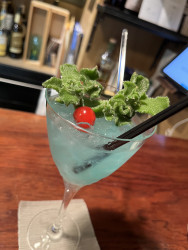
August 27, 2009
Love Bytes
Legitimate entertainment or indefensible smut? The thriving industry of dating simulator games is inspiring a legion of followers--and detractors
By Metropolis
Originally published on metropolis.co.jp on August 2009
Ever since she was a small child, Chinatsu Kurahana has loved to draw. These days she creates beautiful anime-style men for popular computer games like Lamento and Togainu no Chi. Since she became an established freelance illustrator three years ago, her characters have won accolades in Japan and abroad. Her anime men are handsome and wild.
They are also often in bed together.
“I work on dating simulation adventure games for women,” Kurahana tells Metropolis. “There aren’t many things that make women happy, so I want to make some.”
Dating simulator games are one small corner in the wide world of Japanese otaku. Most take the form of bishoujo (beautiful girl) games for the PC. Playing styles range from virtual conversations between the player and the characters in galge (girl games) to overt pornography in eroge (erotic games) and yaruge (sex games). In otome games, the player is a woman going after hot guys, while in “boys love,” it’s just dudes getting rude. The dating sim scene is complex, and is getting a mixed response as it spreads overseas along with other “Cool Japan” exports like music, anime and manga.

Courtesy of Hobibox. All Rights Reserved
Dating sims trace their history back to adult-oriented games from the early ’80s like Koei’s Night Life and Enix’s Lolita Syndrome. The former illustrated sexual positions and provided players with a “rhythm calculator,” while the latter featured mini-games in which users would disrobe young girls. A company called Hacker was even making “unlicensed” erotic games for the Nintendo Famicom Disk System. Such was the demand that the NEC PC98 used compatibility with such games to beat off its competition and emerged as Japan’s primary computing platform in the ’80s and most of the ’90s, until Windows 95 came along.
Dating sims really took off with the rise of affordable PCs in the mid-’90s. At the same time, the chronically underfunded anime industry imploded under demands to produce hit TV series like Neon Genesis Evangelion, a rare bright spot in a recessionary market. Many young creators switched over to dating sims, which are cheaper to produce, have a dedicated audience, and are often free of corporate influence.
“There are some big and really successful eroge makers, but the majority of companies are small, independent groups of four or five people, and they sell maybe three to five thousand copies of a given title,” says Francesco Fondi, 37, who founded Play X in Italy in 1998, the first magazine outside of Japan dedicated to dating sims. “The games are cheap ways to experiment with new stories.”
The bulk of adult-oriented games today center on love, specifically getting girls to fall for you by sweet-talking them and increasing their “love meters.” They feature slideshow images of static, two-dimensional characters, accompanied by text and voiceovers. The lack of three-dimensional images has a lot to do with the low production budgets, as do the limited number of animated scenes. But fans say the close-ups of flat anime characters actually look better than slicker polygon imagery. The flow of the game depends on which characters players choose to talk to, how they respond to prompts, and how they behave during dialogues. In essence, dating simulators are interactive visual romance novels.







